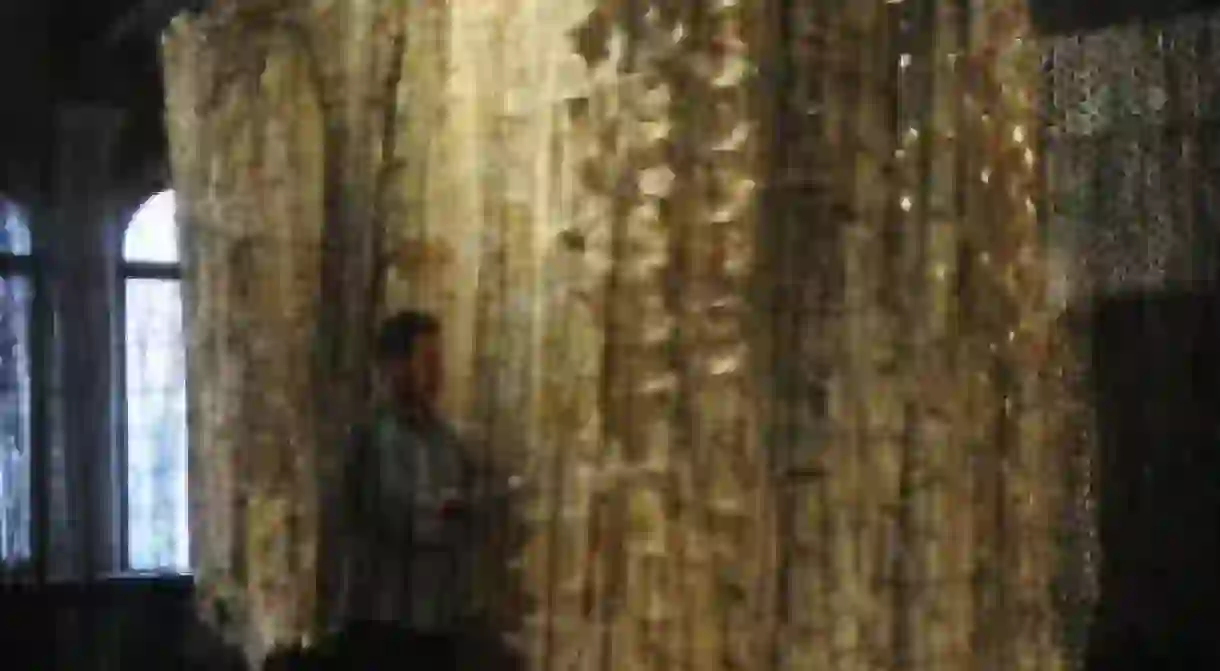Macedonia's Pavilion At The 55th Venice Biennale

The National Gallery of Macedonia is organising the sixth entry for the national pavilion of the Republic of Macedonia at the 2013 International Art Exhibition in Venice – la Biennale di Venezia. Elpida Hadzi-Vasileva will display her exhibit entitled Silentio Pathologia, a work that bridges the gap between the brutal and beautiful.

Silentio Pathologia aims to reflect the overarching theme of the Venice Biennale with its ability to utilise both scale and the element of surprise, in order for the viewer to see both their immediate surroundings and the world as a whole differently. ‘Il Palazzo Enciclopedico’ or ‘The Encyclopedic Palace’ is the title which curator Massimiliano Gioni chose for the 2013 Venice Biennale. The theme compels the artists exhibiting to search for relations with different worlds, using ‘historical works, different references, and works that do not claim to be works of art’ to stimulate realities beyond our imaginations. Silent Pathologia will draw upon her original proposal to the Macedonian Ministry of Culture – reflecting the movement, migration and impact of medieval plagues throughout Europe (in particular city states such as Venice) and considers concerns about international migratory illnesses such as coronavirus.

Macedonia does not have its own permanent pavilion so space had to be found to accommodate Hadzi-Vasileva’s ambitious and large-scale work. Silentio Pathologia will be housed in the space within Santa Croce; installed in four layers, the piece will take viewers on a ‘journey inside space through a maze.’ The piece itself is made out of 907,000 silkworm cocoons, 700 albino rat skins, 150 square metres of pure woven silk, a massive cone of folded corroded steel – and shockingly, four live rats. Artist Alison Wilding says of Hadzi-Vasileva that she has an almost ‘sacrificial capacity for hard work, combined with a rare lack of squeamishness.’ It is a slowly evolving and carefully considered body of sculpture; Hadzi-Vasileva’s large-scale works involve repetitive, physical labour by the artist over extended periods of time. One critic said ‘she gives herself to the material, and the material gives back. She gives the work the time it needs – and then quietly but insistently asks for the time of the viewer too.’

Elpida Hadzi-Vasileva was born in 1971 in Kavadarci, Macedonia. She completed her MA in Sculpture at the Royal College of Art, London in 1998 and currently lives and works in Brighton, England. Central to the artist’s approach is an interest in responding to the specifics of a given location: its history, communities and environment. Her site-specific installations work across various media including sculpture, video and sound installations, photography and architectural interventions. She has exhibited extensively; highlights have included The Wish of the Witness (2011), an exhibition of works in a London restaurant following on from an eight month residency. Compulsive, Obsessive Repetitive in Towner Gallery, England (2011) and artSOUTH in Mottisfont Abbey, England (2013).
The Macedonian Team:
Artist: Elpida Hadzi-Vasileva.
Commissioner: Halide Paloshi.
Curator: Ana Frangovska.
Venue: Scuola dei Laneri, Santa Croce 113/A.
The 55th International Art Exhibition of the Venice Biennale will take place from 1st June 24th November. The Culture Trip‘s Venice Biennale Series is an article series leading up to the start of the exhibition. 88 countries participate in this year’s Biennale 10 of them for the first time and 150 artists from 37 countries, our coverage over the next couple of months will highlight a selection of the National Pavilions that will be participating in the 2013 edition of the Venice Biennale. Watch the Biennale page on our site or The Culture Trip’s Twitter, Facebook and Pinterest pages for our daily Biennale articles and updates.
By Helen Brady













